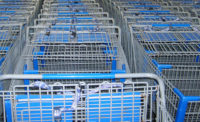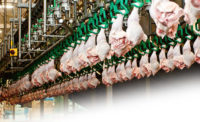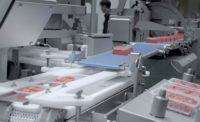The global meat processing equipment market is anticipated to grow, fueled by the world’s increasing population of meat-eating consumers with high disposable incomes raising demand for meat products.
More than two out of three (68%) of shoppers say they would like to see more value-added meat products, according to the recently released Power of Meat 2022 report.
Consumer demand for new meat products coupled with ongoing tight labor markets for meat processors can make a processing plant equipment upgrade an attractive consideration.
“Automation improves the efficiency of workers on the line and may reduce the numbers of employees needed,” Dr. Lynn Knipe said. “This applies to both the slicing and dicing processes, as well as sanitation of the equipment.”
Knipe—an Ohio State University associate professor who orchestrates processed meats extension programs—said the new technology being introduced in processing equipment can be complex, which may mean fewer workers will be needed. However, the remaining workers on the floor will need to be well trained to operate and maintain the new equipment.
“For the actual processes, automation of slicer loading, loading finished slices into the packaging machine, boxing and palletizing can assist workers ergonomically,” he said. “Regarding cleaning and sanitation, automation streamlines the cleaning process with less human handling, which improves food and worker safety, compared to disassembling and hand-cleaning sharp blades.”
While upgrading to automate the production process boasts its advantages, proper maintenance of existing machinery can go a long way toward keeping a meat processing line running efficiently, Knipe said.
“Buying the latest in slicing/cubing equipment technology does not guarantee perfect slices and the best slicing yields,” he said. “The density of the product to be sliced and the selection and care of the slicing blades may be as important, if not more, than buying the best slicer.”
Predictive maintenance enabled by automated processing lines helps to continuously optimize use of inputs, said Tom Egan vice president of Industry Services for PMMI, the Association for Packaging and Processing Technologies.
New technologies typically use better materials and designs for making equipment, which should result in reduced maintenance costs for processing operations, Knipe said.
“Equipment manufacturers seem to be working closer with their customers to properly train workers to set up, operate and maintain equipment to maximize the efficiency and life of the equipment, using a preventative maintenance approach,” he said. “Some equipment manufacturers offer audits of equipment and processes to determine if processors are optimally using and maintaining their equipment.”

.png?height=96&t=1647275041&width=96)



Report Abusive Comment